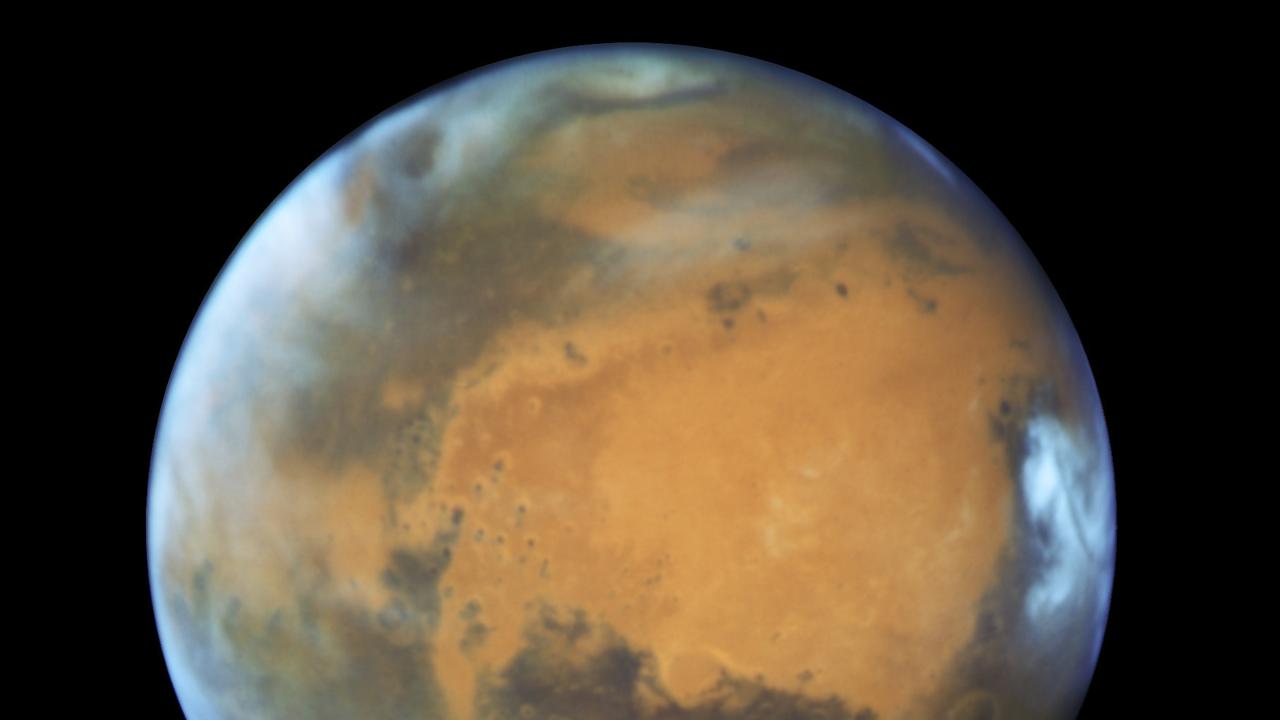Mars and Earth in opposition means the red planet is at its brightest for viewing
IT hasn’t happened for 15 years and won’t happen again for another 30. So hopefully you made sure you got out and saw Mars at its brightest.

NOW is the time to catch Mars in the night sky.
Right now the red planet is on its closest approach to Earth in 15 years. The two planets are just 35.8 million miles (57.6 million kilometres) apart.
This means the Earth is in ‘opposition’ with Mars, which means it is sitting directly between the Sun and the planet.
This is the first time it has been in opposition since 2003. Back then, Mars was even closer to Earth — in fact, it was the closest it had been for 60,000 years.
While, it is not as close this time round, it is still going to look incredible in the night sky. But make sure you catch it in 2018 because it won’t happen again until 2050.
It’ll be easy to see, too. All you need to do is look for the “bright reddish-orange thing in the sky,” University of Sydney astronomer Tim Bedding told Fairfax.
Although Mars and the Earth were officially in opposition last Friday Mars was at its brightest Tuesday night. Astronomers expect good viewing through early August.
NASA is advising people to get out and take a look while the viewing is at its best.
Get outside TONIGHT to see Mars as it approaches Earth closer than it has been in 15 years! Here’s what you need to know: https://t.co/ttrx73J9AV pic.twitter.com/NUs1w96p7W
— NASA (@NASA) July 31, 2018
A massive dust storm presently engulfing Mars, however, is obscuring surface details normally visible through telescopes. The Martian atmosphere is so full of dust that NASA’s Opportunity rover can’t recharge — not enough sunlight can reach its solar panels — and so it’s been silent since June 10. Flight controllers don’t expect to hear from 14-year-old Opportunity until the storm subsides, and maybe not even then.
The good news about all the Martian dust is that it reflects sunlight, which makes for an even brighter red planet, said Widener University astronomer Harry Augensen.
“It’s magnificent. It’s as bright as an aeroplane landing light,” Augensen said. “Not quite as bright as Venus, but still because of the reddish, orange-ish-red colour, you really can’t miss it in the sky.” In 2003, Mars and Earth were the closest in nearly 60,000 years — 34.6 million miles (55.7 million kilometres). NASA said that won’t happen again until 2287. The next close approach, meanwhile, in 2020, will be 38.6 million miles (62 million kilometres), according to NASA.
Observatories across the U.S. are hosting Mars-viewing events. Los Angeles’ Griffith Observatory will provide a live online view of Mars early Tuesday.
The total lunar eclipse on Friday was visible in Australia, Africa, Asia, Europe and South America. A total lunar eclipse occurs when the sun, Earth and moon line up perfectly, casting Earth’s shadow on the moon. Friday’s will be long, lasting 1 hour and 43 minutes.



